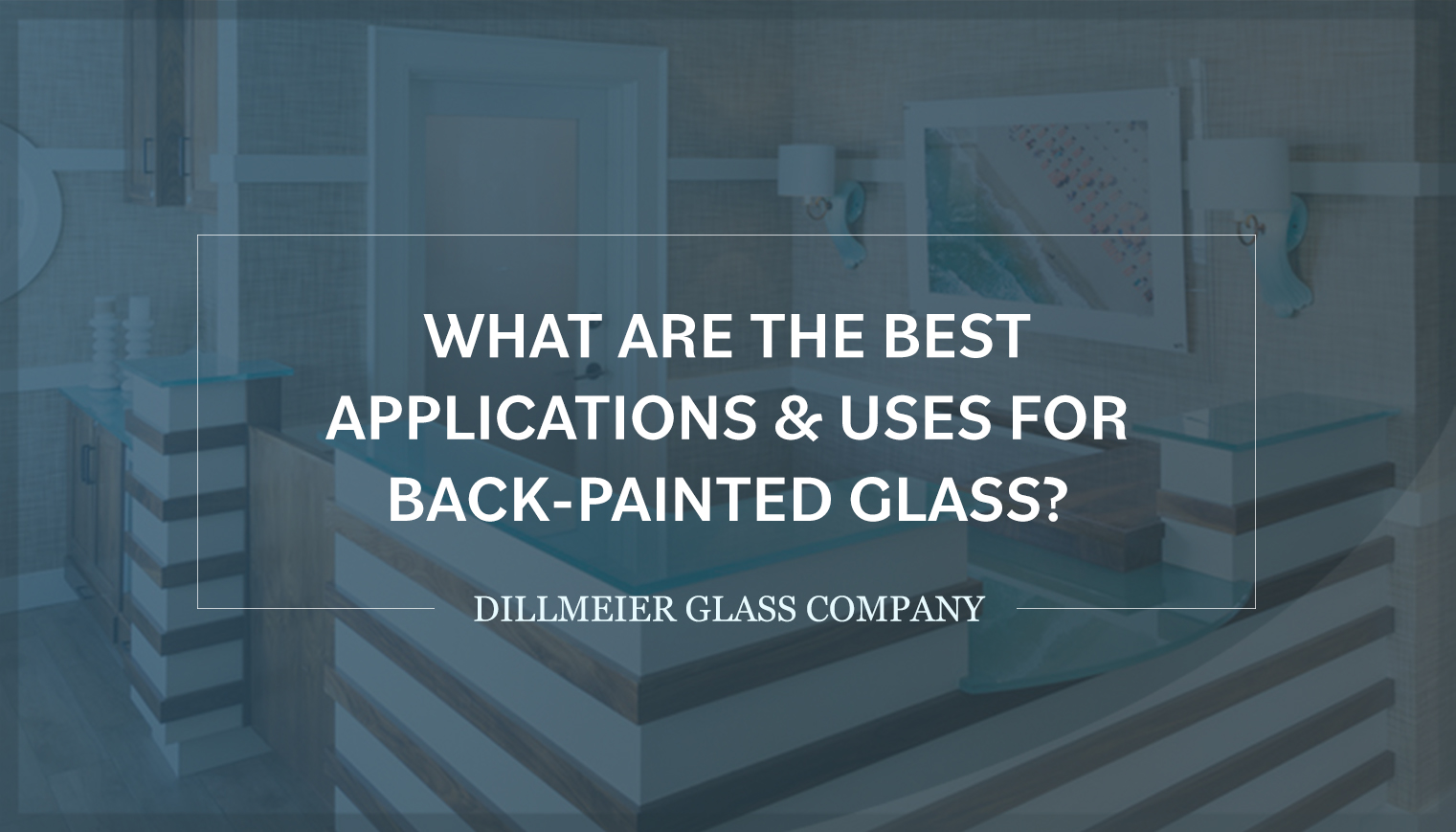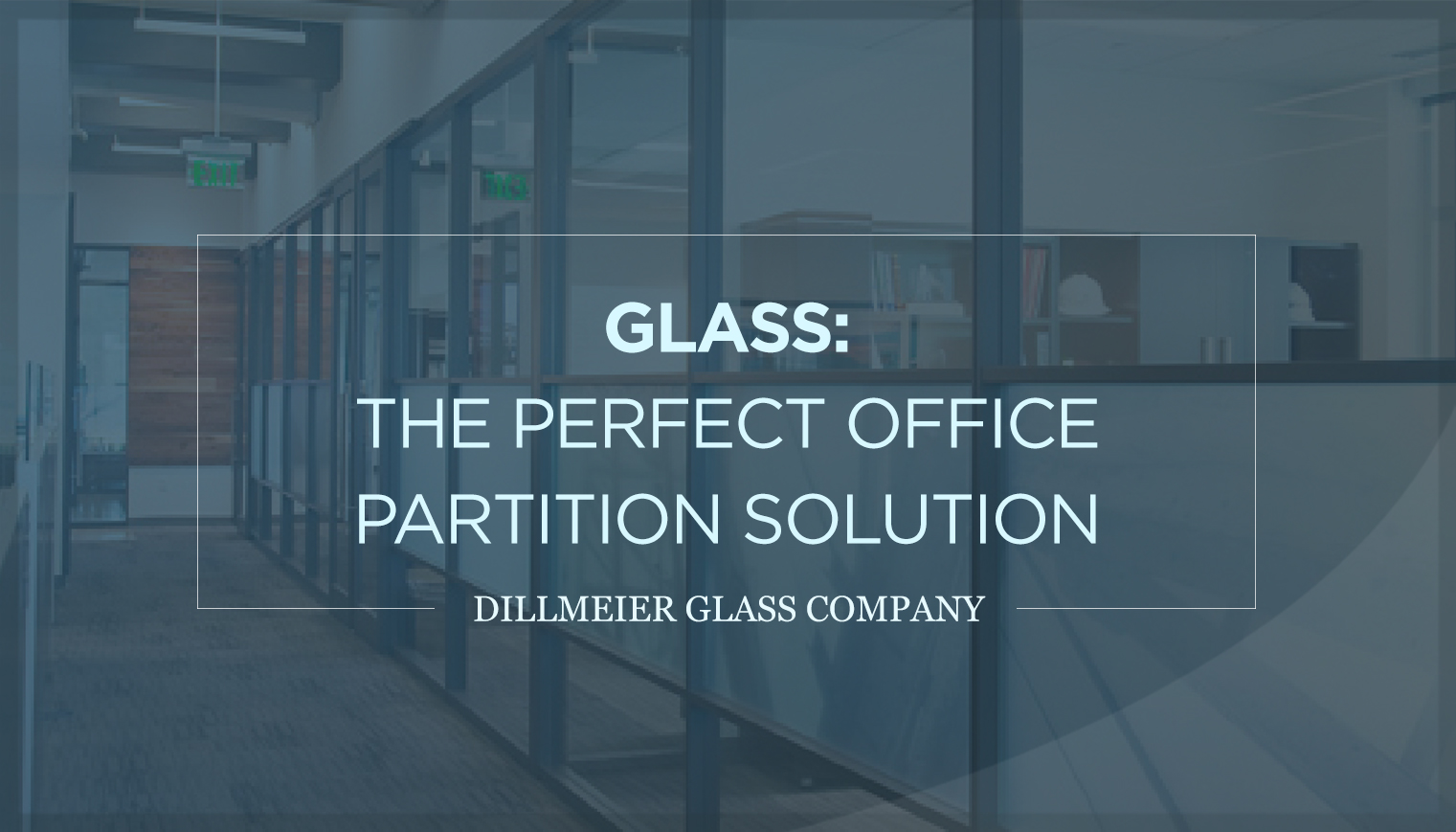Decorative Glass Options & Benefits
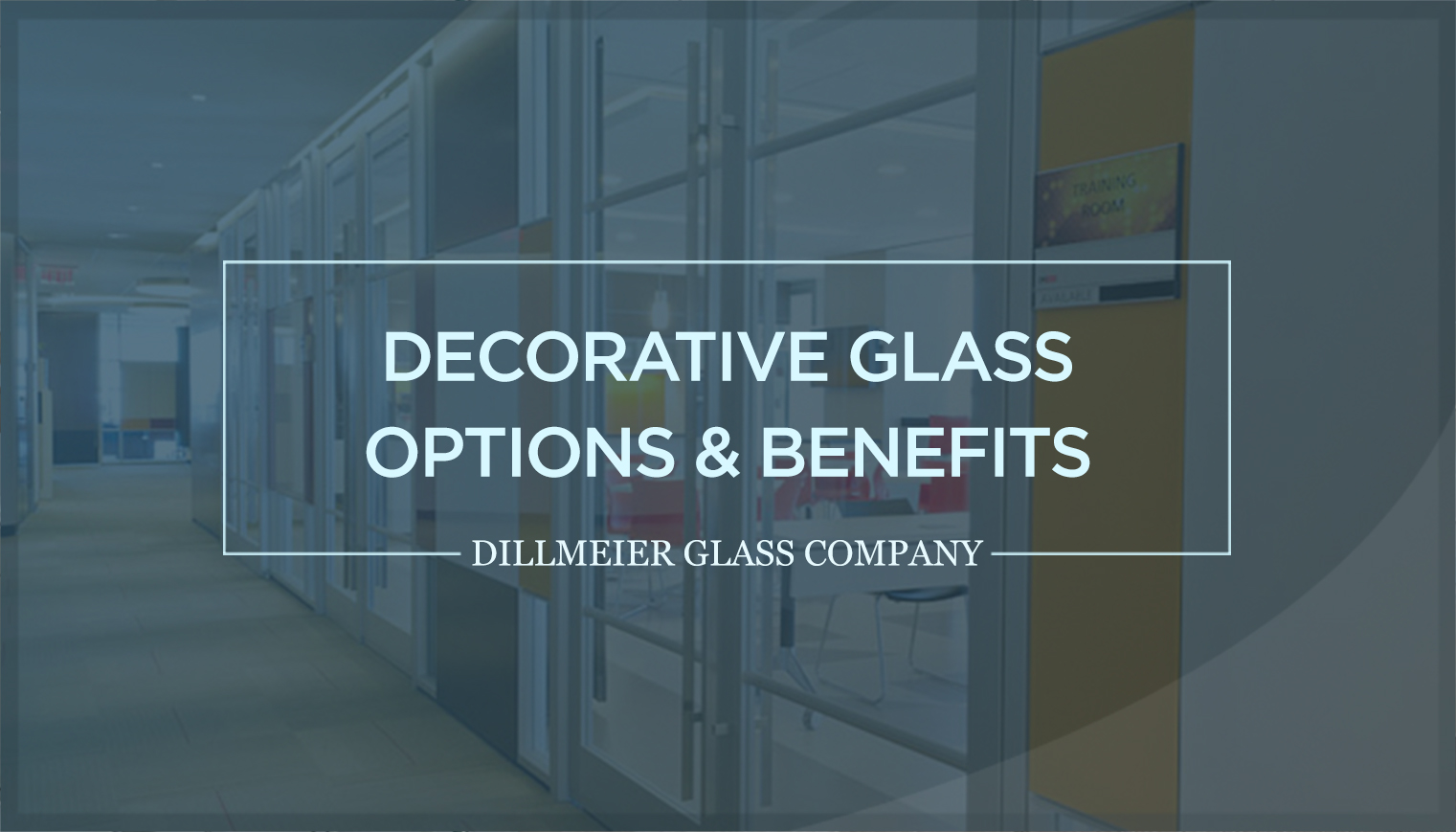
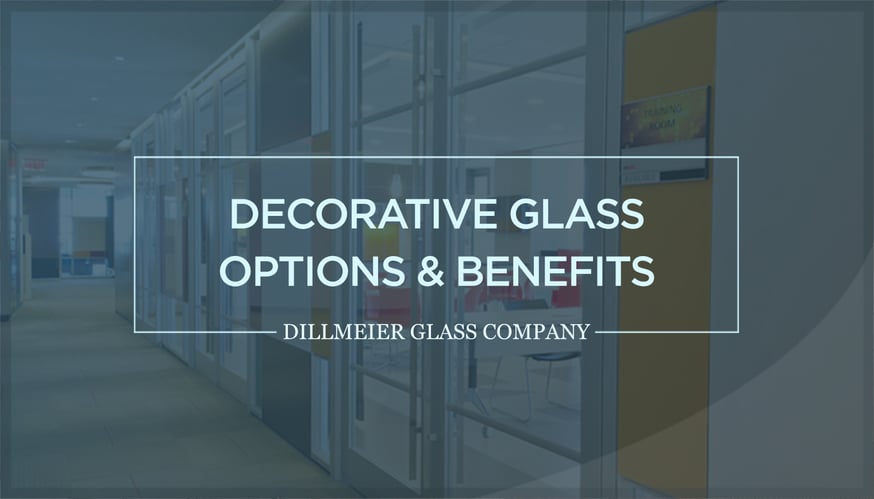
Editor’s Note: This blog post was originally published in June 2020 and has been revised to reflect industry updates.
Decorative glass is often utilized in various industries and applications for its unique color options, textures, customizations, branding, and other design elements. It adds extends natural light within interior spaces, along with required privacy. With many customizable features including laminated glass, sandblasting, silkscreening, and back-painting it’s best to consult an experienced fabricator, such as Dillmeier Glass Company, to ensure your project achieves and exceeds your goals.

Whether incorporating pristine retail display cases and shelves, highlighting food and drink specials, or maintaining privacy, options are limitless. Choosing the best style is dependent on several factors, such as design specifications, aesthetics, and more.
The following helpful overview breaks down the various types, attributes, and applications of this popular fabrication practice.
Top Benefits of Decorative Glass
Whether incorporating pristine retail display cases and shelves, highlighting food and drink specials, or maintaining privacy, the many benefits of decorative glass options are limitless.
Decorative glass is renowned for its aesthetics, strength, durability, security. It’s also more cost-effective when compared with other materials. Among other advantages, its transparency increases natural light in the workplace—promoting positive mental and physical health among employees by improving serotonin production and Vitamin D levels. Decorative glass also eliminates the need for excessive curtains, blinds, or shades, instead providing a perfect canvas for companies’ frosted logos, designs, and digital images.
Easy to clean and sanitize, decorative glass doesn’t require specialized solvents or cloths, and remains streak and scratch free. This is especially important for high-traffic areas with railings, elevators, and furniture.
Decorative Glass for Opacity & Soundproofing
Decorative glass can also be customized to achieve various opacity levels, from total blockage to complete transparency. Associated techniques include custom back-painting and color-matching, as well as utilizing tinted, reeded, and laminated glass.
Capabilities such as laminated glass can also help improve sound quality, while reducing noise in accordance with Sound Transmission Class (STC) ratings.
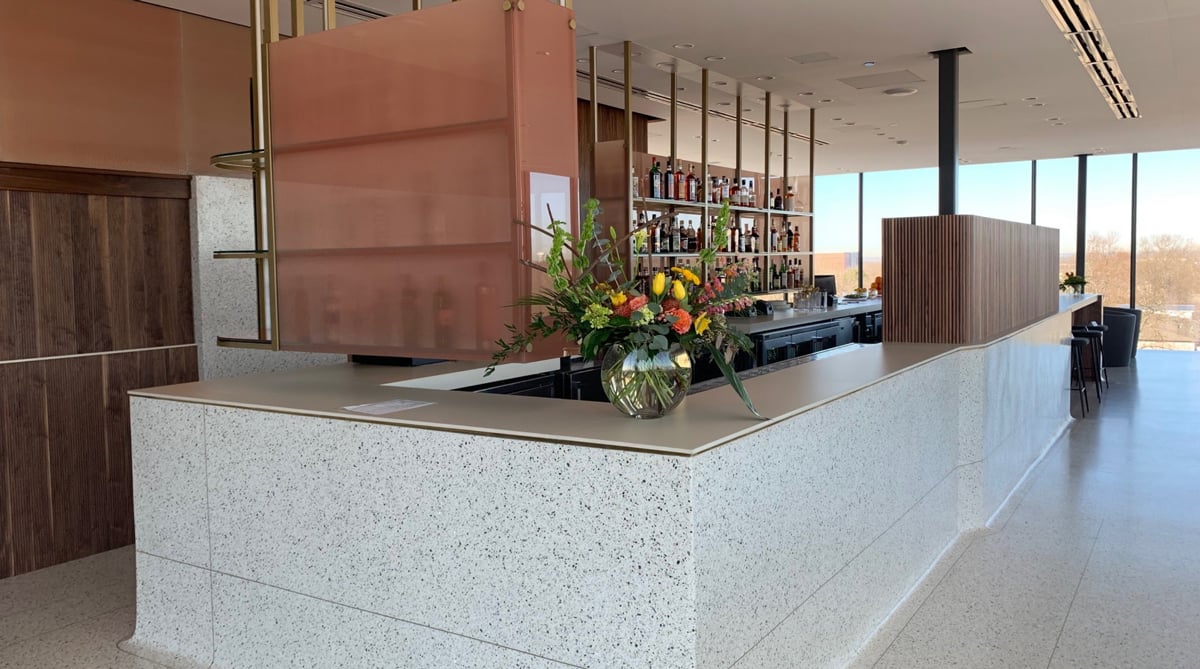
Dillmeier Glass Company offers several decorative glass options—such as laminated glass—to foster endless possibilities within existing designs and new focal points.
Decorative Glass Types & Customizations
Decorative glass can be tailored to meet specific business needs or requirements. Here are several popular types and applications:
Low-Iron Glass
Ideal for display-oriented settings, low-iron glass undergoes a special process to eliminate its natural greenish tint and improve transparency.
Laminated Glass
Sandwiching various interlayers between two lites, laminated glass offers endless design possibilities. Incorporating fabric, metallic screens, and other decorative interlayers, these blend or accent existing designs, or create new focal points.
Laminated glass is also strong and durable, and won’t smash into dangerous, sharp slivers or shards when impacted. Instead, it will feature web-like fissures that maximize safety and minimize the risk of harmful injuries
Back-Painting
Back-painted or color-matched glass appears sleek, cohesive, and clean. Its primary color palette of yellow, blue, green, gray, purple, red, and orange enables customized branding.
Sandblasting & Silk Screening
These techniques create customized logos, images, and designs—transforming any glass piece into a personalized branding opportunity to impress and amaze prospects and customers. Logos, for example, can be designed as the focal points or backgrounds of glass panes. Sandblasting and silk screening effects can therefore electrify everything from frameless glass walls, railings, and balustrades to markerboards and conference areas.
For a fully frosted appearance, consider acid-etching for best results.
Reeded Glass
Dillmeier Glass Company float manufacturer partners create reeded glass varying in thickness from 1/4 to 3/8 of an inch by pressing tempered glass between metal rollers. Its ripple-like design is utilized for a wide range of applications including walls, windows, and doors.
Tinted Glass
This reflective, colorized glass adds bold statements to storefronts, skylights, and other commercial applications. It also helps retain heat while reducing harmful UV light.
Patterns & Shapes
Glass is an extraordinary canvas to showcase any range of company artwork, designs, or logos. Its customizations can personalize any workplace with creative elements that will impress, inspire, dazzle and wow, while conveying a crystal-clear message to employees, prospects, and clients: This company has style!
Applications & Common Areas of Use
Decorative glass has a wide range of applications throughout a diverse spectrum of industries and environments. Here are several.
Decorative glass can be customized to achieve various opacity levels, from total blockage to complete transparency. Associated techniques include back-painting and color-matching, as well as utilizing tinted, reeded, and laminated glass.
Office Environments
As more organizations begin re-introducing employees back to the office following the easing of coronavirus pandemic-related precautions, decorative glass dividers and partitions are continuing to be used in workplace settings to protect the health and safety of employees and customers.
In addition to these safeguards, decorative glass can also improve privacy, limit distracting noise through sound-proofing, and add or reduce natural light, depending on its desired opacity. Laminated and reeded glass, along with silk screening, provide additional customization.
Restaurants & Hotels
Back-painting is another popular technique utilized within businesses, with the reverse side of a glass pane shaded to incorporate splashes of style and beauty within dining rooms, bathrooms, guest rooms, and common areas.
Medical Facilities
With the return of in-person appointments, medical facilities are ramping up interior aesthetics. Unlike traditional curtains or blinds, frosted or back-painted glass blends privacy with design—an important attribute in sensitive areas, such as exam rooms and observatories. Glass is also easier to clean and disinfect.
Retail
Consider low-iron glass for display cases, dividers, and countertops. Transparent, customizable, and elegant, it is perfect for showcasing high-end merchandise such as jewelry, watches, and handbags, as well as other goods, such as personal care products, and much more. UV-bonded tempered glass enhances safety, and its strength and durability can withstand smash-and-grab attacks.
Design Expertise for Every Application & Environment
When mulling decorative glass customization and design options, it’s imperative to consult an experienced fabricator such as Dillmeier Glass Company. Our professionals provide the technical expertise and guidance to ensure your project is completed on time and within budget!
Dillmeier Glass Company can determine the best decorative glass solutions for your business. Tell us about your project today!

